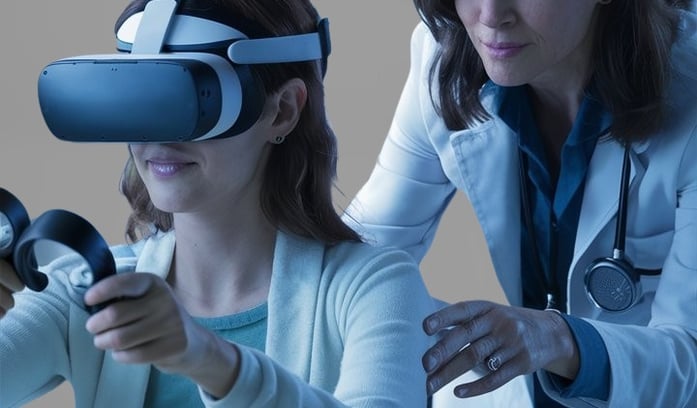The Role of Virtual Reality in Treating Mental Health Issues
Discover how virtual reality is revolutionizing mental health treatment. Explore its impact on anxiety, PTSD, depression, substance abuse, and phobias, providing immersive, effective therapy solutions. Learn more about VR's benefits in mental health care.
VIRTUAL REALITY


The Role of Virtual Reality in Treating Mental Health Issues
Mental health issues have become increasingly prevalent in modern society, affecting individuals of all ages and backgrounds. While traditional therapy approaches have proven effective, the emergence of virtual reality (VR) technology has opened up new possibilities for treating mental health conditions. VR has the potential to revolutionize the field of mental health by providing immersive and interactive experiences that can help individuals overcome their challenges.
Types of Mental Health Issues Treated with Virtual Reality
Virtual reality can be used to treat a wide range of mental health issues, including:
- Anxiety disorders: VR can create simulated environments that expose individuals to their fears and phobias in a controlled setting, allowing them to gradually confront and overcome their anxieties.
- Post-Traumatic Stress Disorder (PTSD): VR therapy can recreate traumatic events, helping individuals process and reduce the distressing symptoms associated with PTSD.
- Depression: Through VR, individuals can engage in activities and environments that promote positive emotions, helping to alleviate symptoms of depression and improve overall mood.
- Substance abuse: VR therapy can simulate real-life scenarios that trigger cravings, providing individuals with a safe space to practice coping strategies and avoid relapse.
- Phobias: VR can recreate phobic situations, such as fear of flying or heights, allowing individuals to confront and manage their fears in a controlled environment.
How Virtual Reality Aids in the Healing Process
Virtual reality offers several unique advantages that contribute to its effectiveness in treating mental health issues:
- Exposure therapy: VR allows therapists to create controlled and customizable environments that expose individuals to their fears or triggers. This exposure can be gradually increased over time, helping individuals build resilience and reduce anxiety.
- Emotional engagement: VR experiences can evoke strong emotional responses, making therapy sessions more impactful and memorable. This emotional engagement enhances the learning and healing process.
- Safe and controlled environment: Virtual reality provides a safe space for individuals to confront their fears or traumas without the risks associated with real-world exposure. This controlled environment fosters a sense of security and empowerment.
- Increased motivation: The immersive nature of VR therapy can increase motivation and engagement in the treatment process. Individuals may be more willing to participate in therapy and practice new skills within a virtual environment.
- Real-time feedback: VR technology allows therapists to monitor and provide real-time feedback on individuals' reactions and progress during therapy sessions. This feedback can be used to tailor treatment plans and make necessary adjustments.
In conclusion, virtual reality has demonstrated great potential in the field of mental health treatment. By providing immersive and interactive experiences, VR therapy offers a unique approach to addressing various mental health issues. Its ability to create controlled environments, evoke emotional engagement, and provide real-time feedback contributes to its effectiveness in helping individuals overcome their challenges. As technology continues to advance, virtual reality is expected to play an increasingly significant role in mental health care.
Bibliography
1. Rizzo, A., & Koenig, S. T. (2017). Is clinical virtual reality ready for primetime? Neuropsychology Review, 27(2), 209-219.
2. Freeman, D., Reeve, S., Robinson, A., Ehlers, A., Clark, D., Spanlang, B., & Slater, M. (2017). Virtual reality in the assessment, understanding, and treatment of mental health disorders. Psychological Medicine, 47(14), 2393-2400.
3. Maples-Keller, J. L., Bunnell, B. E., Kim, S. J., & Rothbaum, B. O. (2017). The use of virtual reality technology in the treatment of anxiety and other psychiatric disorders. Harvard Review of Psychiatry, 25(3), 103-113.






